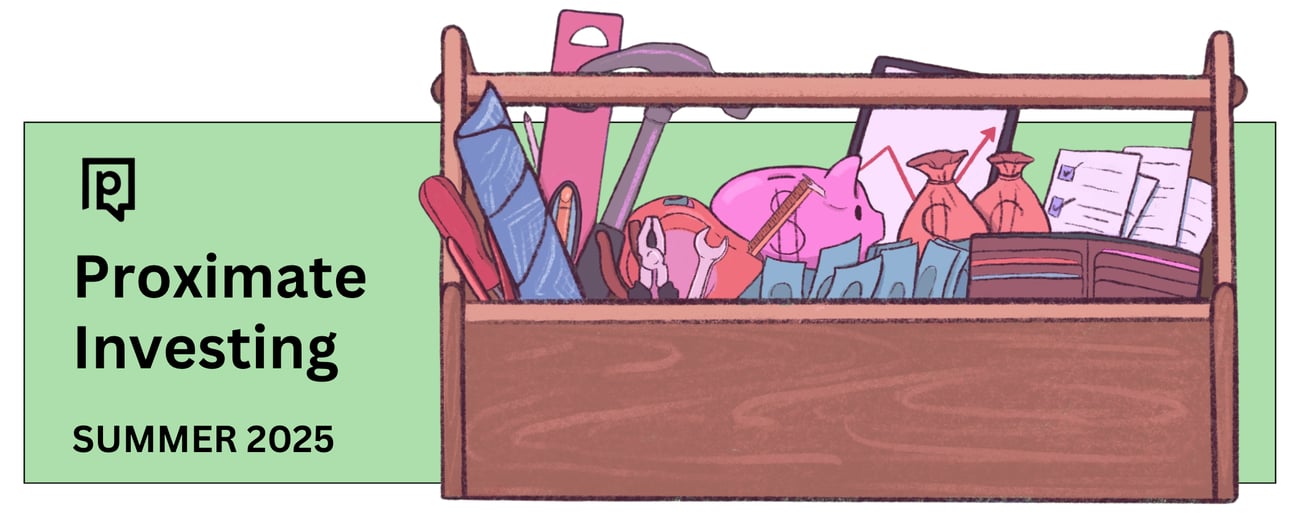| View in browser |
 |
|
Welcome back to Proximate Investing, a newsletter exploring the movement for community-controlled capital in the United States.
We're gearing up for a busy fall, with lots of new stories and editorial collaborations. Want to stay in the loop? Join our October virtual launch event, and sign up to receive future editions.
In late June, I flew to New Orleans to attend the annual Grantmakers in Health conference. The mood was tense as we braced for Congress to pass legislation that would slash Medicaid, food assistance and reproductive health.
The throughline in New Orleans was clear: as public funds are clawed back, it will be up to private actors – foundations, impact investors, CDFI's – to step up and fill gaps in basic services.
But while moving money is important, it’s crucial to also reimagine the process around those dollars. Funders are simply not accountable to the public in the same way as government: for instance, community members can’t vote out the head of a developer that has been unresponsive to community needs.
In this edition, we explore what accountability for private dollars can look like, from a number of different angles. We also look back at the history of community-controlled capital, and the future of public dollars in New York City.
Thanks to Robert Wood Johnson Foundation for supporting this project. And reach out at hello@proximate.press with any story ideas, links we should see, or field updates. |
 |
|
|
|
|
|
|
Can health conversion foundations bridge capital and community? |
|
|
|
One hot topic at Grantmakers in Health was the rise of health conversion foundations: charitable entities created from the sale of a hospital or health system.
Health conversion foundations arose in the 1980s and 1990s as a condition of these mergers; today, roughly 300 of these foundations hold store more than $40 billion in assets across the United States.
How are those $40 billion invested, before they are given out as grants? In this piece, I explored the potential for these foundations to lead the way in participatory decision-making. Read it here. |
|
|
|
|
 |
|
We'll be publishing original journalism about community-controlled capital through the rest of 2025. Pitch us if we should be writing about your work! |
|
|
|
|
|
|
|
|
|
|
|
|
|
|
|
|
 |
|
|
|
OK, let's get wonky. Here's what we're reading from around the Internet on the moment in community-controlled capital:
-
Sharing endowment oversight. Participatory oversight of endowments often feels like a non-starter, so it’s exciting to see examples underway. In the UK, the Friends Provident Foundation, along with other UK charitable foundations, is kicking off a participatory investing process with young adults aged 18-25 as part of their Investing Olympics initiative. Investing Olympics is taking a look at how endowments of large foundations are invested -- and who gets to decide that.
-
A new resource from Justice Funders. If you’re curious about what it looks like when funders are committed to participatory investing principles, Justice Funders has launched their Just Transition Integrated Capital Fund, along with an open-source investment policy statement and other tools that are available to support other funders and investors looking to shift their investment strategies towards local community control and non-extractive finance.
- Faith and investing. Community investing principles are aligned with many different philosophies and cultural contexts. This November, the Francesco Collaborative is hosting the Catholic Social Teaching and Investment Summit, which will explore how Catholic-rooted asset owners, advisors, fund managers, and leaders can “actively deploy capital into the funds, businesses, and community-rooted strategies that are building a more faithful, regenerative, and just economy.”
|
|
Thanks for reading!
Sign up for future Proximate Investing newsletters here. |
|
|